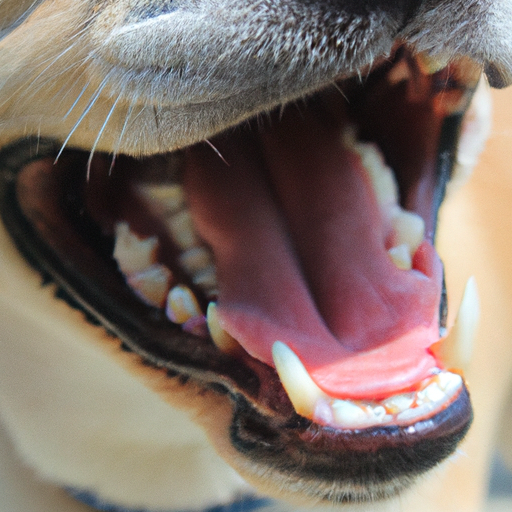Understanding the Basic Anatomy
You’ve noticed that your four-legged friend’s mouth is a complex structure, haven’t you? Well, let’s dive deeper into the world of canine dental anatomy. A dog’s mouth is much more than just a tool for eating. It serves many different purposes, from communication to play.
- Deciduous teeth (puppy teeth): Your puppy will have about 28 deciduous teeth, which are small and sharp. They serve the purpose of preparing the mouth for the adult teeth that will soon follow.
- Permanent teeth (adult teeth): When your dog is about six months old, they will start to lose their deciduous teeth and replace them with around 42 adult teeth. These teeth are larger and have different shapes, each serving a unique purpose.
Your Dog’s Dental Health
Just like us, dogs can experience a variety of dental health problems. It’s your responsibility as a caregiver to ensure their teeth stay healthy. Here are some common dental problems dogs face:
- Dental plaque and tartar: This is the most common problem. These can lead to bad breath, gum disease, and even tooth loss.
- Tooth decay: Although less common in dogs than in humans, tooth decay can still occur in dogs.
- Broken teeth: Dogs love to chew, and sometimes they can break a tooth on a hard object.
How to Maintain Your Dog’s Teeth
Now that you’re familiar with what your dog’s teeth look like and potential dental problems they can face, the next step is learning how to maintain them.
- Brushing: Yes, dogs need their teeth brushed too! Regular brushing can prevent the buildup of plaque and tartar.
- Dental chews and toys: There are many products available that can help clean your dog’s teeth as they chew.
- Regular veterinary check-ups: Your vet can spot any potential dental problems early, before they become severe.
Understanding Your dog’s Dental Life Cycle
As your dog ages, their dental health needs will change. Here’s a general timeline:
| Age | Dental Needs |
|---|---|
| 0-6 months | Puppy teeth, regular brushing |
| 6-12 months | Transition to adult teeth, regular brushing |
| 1-7 years | Adult teeth, regular dental cleanings |
| 7+ years | Senior dental care, possible extractions |
Spotting Dental Problems in Your Dog
Your dog can’t tell you when their mouth hurts, so it’s up to you to spot potential problems. Here are some signs to watch for:
- Bad breath
- Changes in eating or chewing habits
- Pawing at the mouth
- Excessive drooling
- Swollen or bleeding gums
FAQs
Q: How often should I brush my dog’s teeth?
A: Ideally, you should brush your dog’s teeth daily. If that’s not possible, aim for at least three times a week.
Q: What should I do if I think my dog has a dental problem?
A: If you notice any signs of dental problems, make an appointment with your vet as soon as possible.
Q: Can my dog use human toothpaste?
A: No. Human toothpaste contains ingredients that can be harmful to dogs. Use a toothpaste designed for dogs.
Q: Is it normal for my dog’s breath to smell bad?
A: While a dog’s breath might not smell minty fresh, excessively bad breath could be a sign of dental problems and you should consult with your vet.
Remember, your dog’s dental health is an important part of their overall well-being. By understanding what their teeth look like and how to care for them, you can help ensure your furry friend stays happy and healthy.



